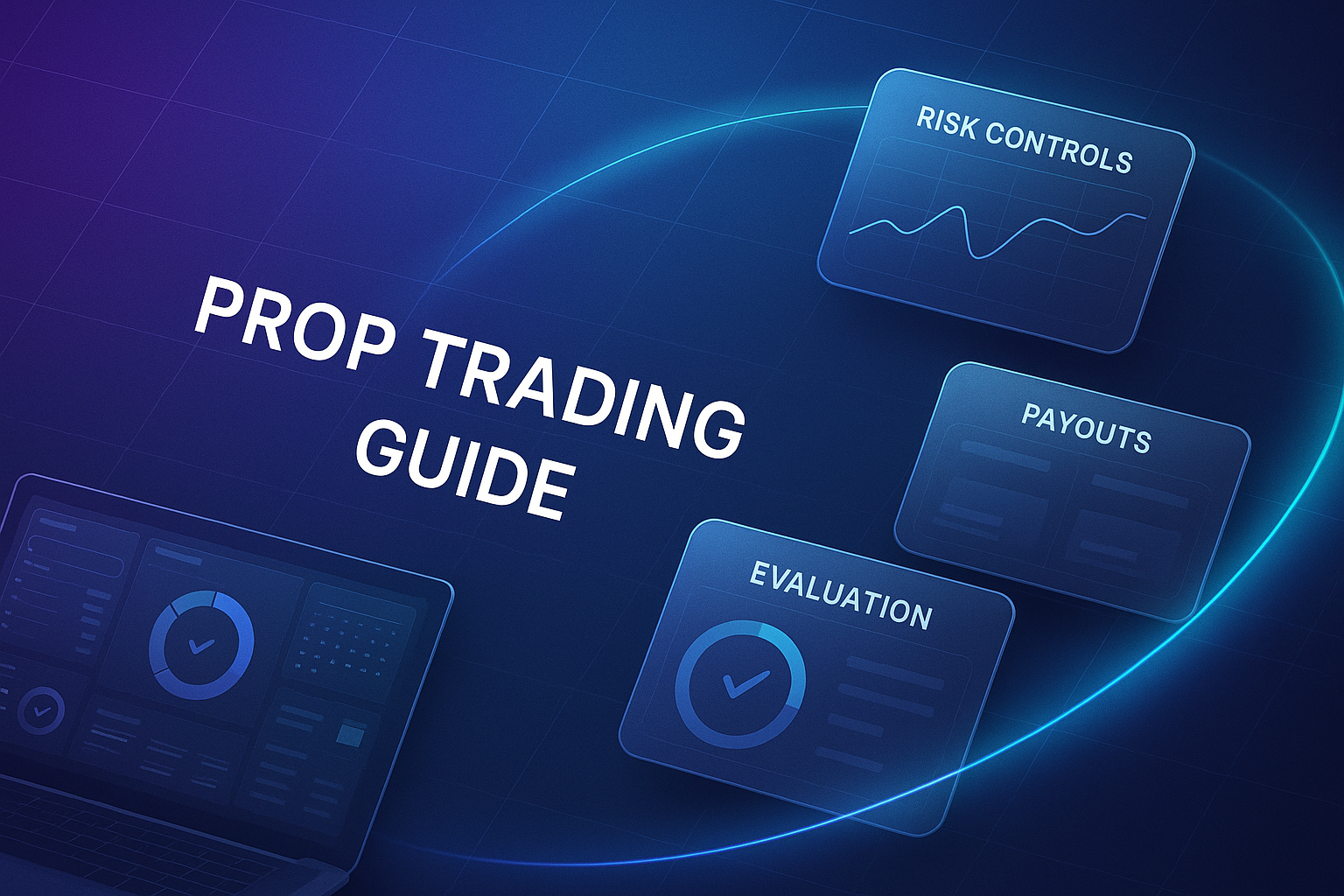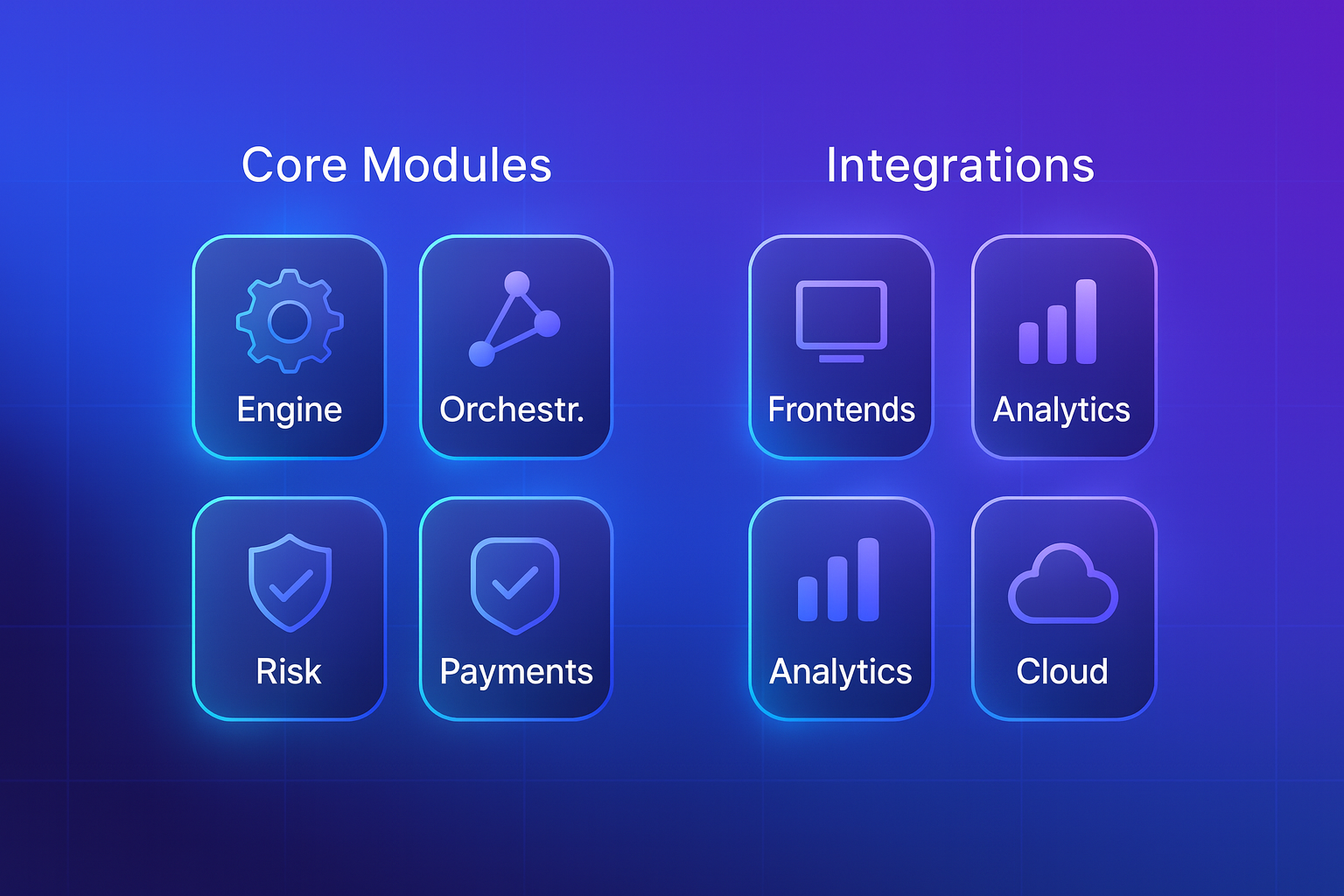Prop Trading — A Modern, Visual Guide to Building a Prop Firm
See how evaluation & instant-funding models work, what regulators expect, and which technology powers a scalable, risk‑governed prop business.

How Modern Prop Firms Work
A prop firm gives traders access to risk‑capped capital under pre‑defined rules and shares profits (e.g., 70–90%). Two commercial models dominate today.
Evaluation (Challenge) Model
- One or two testing phases with profit targets, time windows, and drawdown rules.
- On pass, a funded account (simulated or with risk overlays) and profit share.
- Revenue: evaluation fees, resets, education/data add‑ons.
Best for brand trust and LTV visibility; requires strong rule enforcement.
Instant Funding Model
- Upfront access fee → immediate account with strict daily loss & max drawdown.
- Lower barrier to start, but heavier risk tooling and payable‑flow controls.
- Revenue: access fees, subscriptions, profit share.
Best for acquisition speed; pair with robust abuse/fraud controls.

Why Brokers Add a Prop Arm
Acquisition & Activation
Gamified evaluation funnels bring new traders into your ecosystem without requiring deposits on day one.
Diversified Revenue
Blend fee income with profit share; smooth cash flows across market cycles.
Brand Halo
Transparent rules and fair enforcement create brand equity and community advocacy.
Compliance & Risk Essentials
Policies & Governance
- KYC/AML for payments, payouts, affiliates; sanctions screening.
- Disclosures for rules, resets/refunds, marketing claims.
- Risk Controls — daily loss, trailing drawdown, latency & slippage filters.
- Privacy — data minimization, retention, breach response (GDPR/PDPA).
Operating Model
- Separate evaluation from any live execution stack; maintain audit trails.
- Automated rule enforcement + human review for edge cases and abuse.
- Payment & refund workflows with fraud checks and dispute handling.
- Compliant advertising; avoid implying guaranteed income.
Informational only — consult qualified counsel in your target jurisdictions.
Evaluation vs. Instant Funding — Side by Side
| Aspect | Evaluation (Challenge) | Instant Funding |
|---|---|---|
| Onboarding | Pass phases (targets, time limits, drawdown) → funded. | Pay access fee → immediate account under strict rules. |
| Revenue Mix | Evaluation fees + resets + profit share + education/data. | Access fees + subscriptions + profit share. |
| Risk Posture | Screening reduces adverse selection; slower ramp. | Faster growth; heavier real‑time risk controls required. |
| Best For | Trust‑building, brand longevity, community challenges. | Acquisition velocity, creator/affiliate‑led launches. |
Technology You’ll Need
Core Modules
- Challenge engine & rule builder (targets, time limits, loss limits).
- Account orchestration (multi‑asset, multi‑venue, overlays).
- Real‑time risk enforcement & violation automation.
- Payments & payouts + refunds; fraud & abuse controls.
- KYC/AML integrations; audit‑ready dashboards & logs.
Recommended Integrations
- Trading front ends and bridges; SSO to client portal.
- CRM/ticketing for support; consent & terms tracking.
- Analytics/CDP for cohort metrics and LTV:CAC.
- Cloud infra & observability; DR and RBAC.
Turnkey option: EBSWare Prop.

5‑Step Launch Plan
1) Commercial Design
Price points, rule sets, reset/refund policies, KPIs & risk thresholds.
2) Compliance & Payments
Legal review, disclosures, KYC/AML stack, payout partners & SOPs.
3) Technology Selection
Challenge engine, trading/connectivity, risk tooling, SSO & auditing.
4) Pilot & Hardening
Limited launch; test edge cases (news events, spreads, outages, latency).
5) Scale
Automate onboarding & affiliates, reporting, and advanced analytics.
Downloadable Resources
Compliance Checklist
- Terms, Risk Disclosure, Refund/Reset Policy
- Evaluation Rulebook (targets, limits, violations)
- KYC/AML SOP + Sanctions Screening
- Privacy & Data Retention Policy
- Payment Flow Diagram & Refund Logic
- Incident Response & Abuse Handling
Sample Challenge Rules (Excerpt)
- Profit target: 8% (Phase 1), 5% (Phase 2); 30 days each.
- Daily loss limit: 3%; Trailing max drawdown: 10%.
- Min. 5 trading days per phase; news restrictions apply.
- EAs/algos subject to latency & tick‑manipulation filters.
Adapt to asset class, liquidity and regional norms.